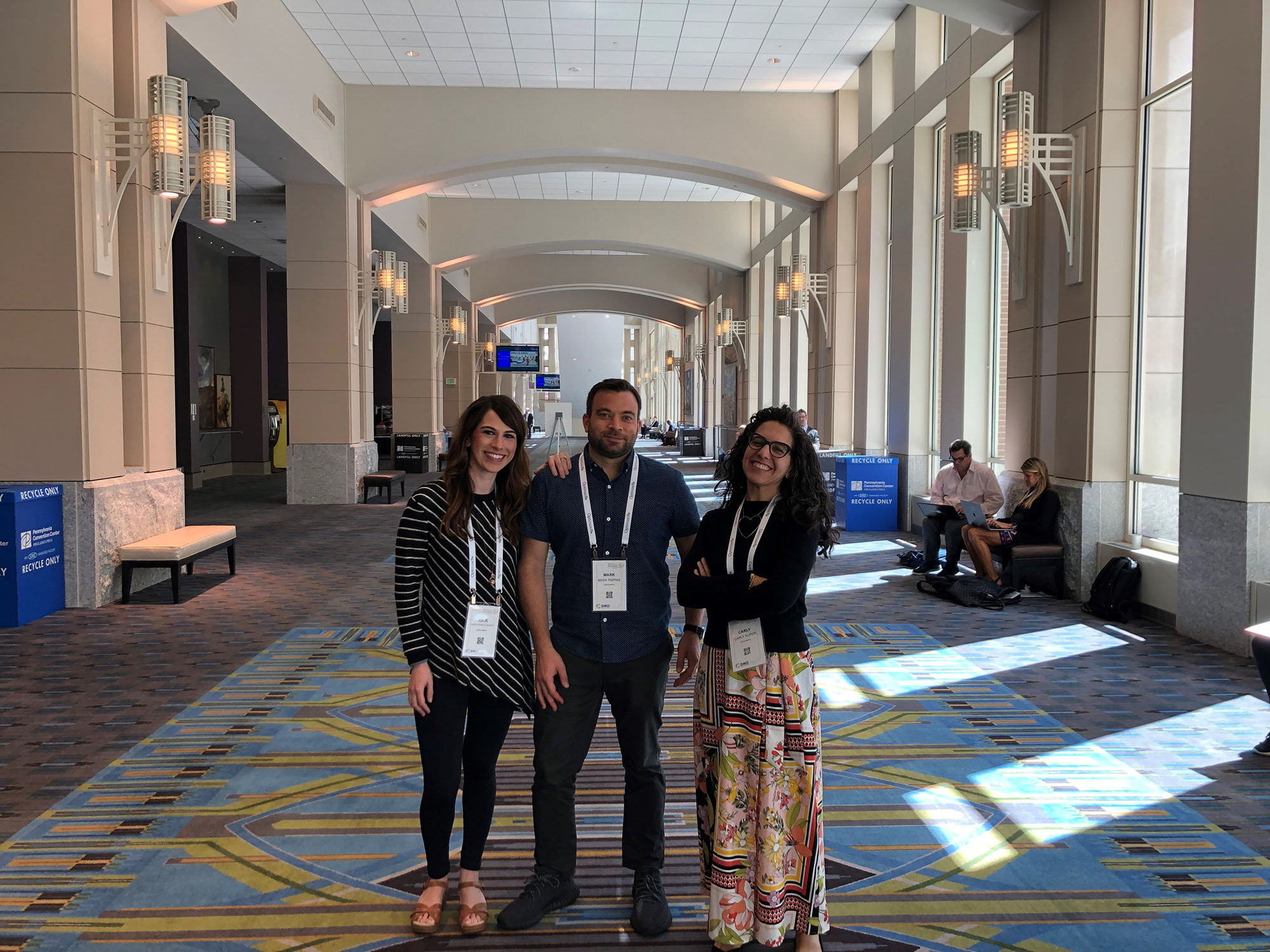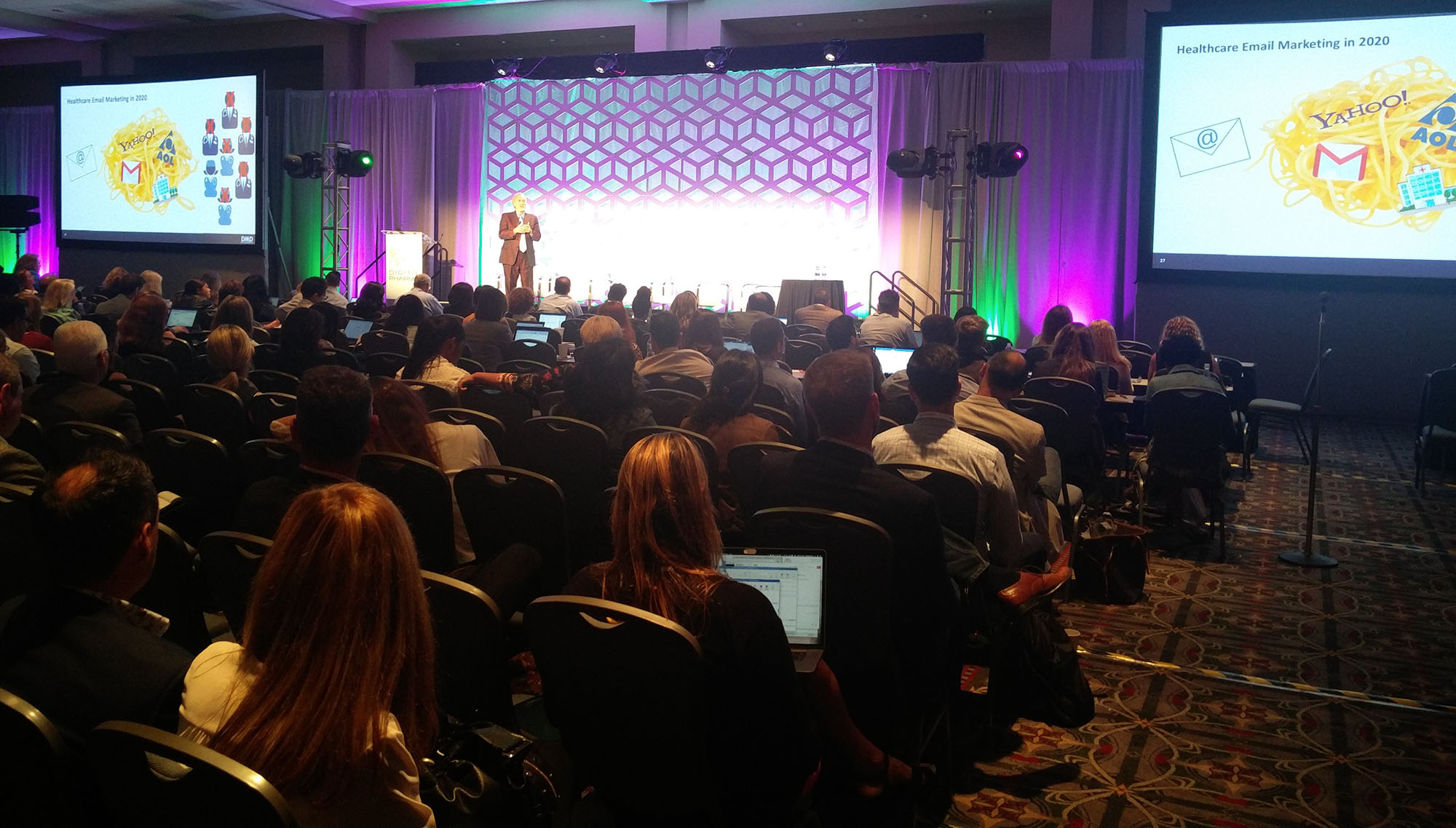Have you ever taken a moment to contemplate the wonder of an entire beautiful forest, and then marveled at the intricacies of a single leaf? It’s not just seeing the forest for the trees, it’s seeing the forest and each individual leaf, and at this year’s Digital Pharma East, we got to take a walk in the woods and appreciate both. This year Digital Pharma East was what Digital Pharma East is always about—how pharma marketers can make an impact with the latest tools and techniques to really move the needle for their brands. But what was different this year was a parallel focus on two very different but very related areas. One focus point is in harnessing our ever-growing data pool (the big beautiful forest), and the other is in making more personal, deeper connections with individuals we’re targeting (that single leaf in your hand). Each is more powerful and impactful because of the other, and significant strides have been made in each that were on display at the conference.

The Big Forest
Let’s focus first on the big forest. We have all of this incredible data, and our industry is getting pretty darn good at figuring out which insights are important and how to leverage them. To aggregate and use social listening data as well as the tons of other data we’re seeing, AI—particularly machine learning—has been heavily adopted. At last year’s Digital Pharma East conference, we presented some case studies on how we use machine learning for client campaigns and many thought it seemed futuristic; this year it seems that people are completely on board and the technique has become much more ubiquitous. What’s spectacular about machine learning is that it can tell you what you need to know, even if it wasn’t part of your original hypothesis. In other words, you can really learn things that may not have been on your radar.
One major data source, social listening, was referenced frequently, both among the consumer-facing (although we know HCPs are there too) sites such as Snapchat, Facebook, and Twitter, and the HCP-only sites like SERMO. In their presentations, Snapchat and SERMO both pointed out that people (especially—but not limited to—younger people) have integrated social media into their everyday lives and speak freely there, making it a highly valuable resource for pharma. And pharma marketers, more than ever before, are very comfortable with partnering with social media. This is a major shift.
The Single Leaf
Moving on to the single leaf, the focus on individual connections was a trending topic that had some presenters looking back to how it had been done in the past to illustrate its importance. Lina Shields of Eli Lilly presented the history of the Cialis launch and explained that at its core was insights gleaned from speaking with potential customers. Bringing us back to today, a side conversation I had with representatives from a rare diseases pharma company was around what they learn from the patients and families who come into their offices every month. Many who presented shared that the individual voices greatly impact the overall. That is something that has not changed for decades, and likely never will—which is a good thing. What is different is that for a while our industry focused so much on shiny new tech that it took the empowered patient movement to remind us that they are the priority. We’ve come back around as an industry.
One reason we’re paying more attention to the individuals is that it is more possible than ever to be able to connect with individuals. Today’s technology allows us to connect—if not on an individual level—then pretty close. That one-to-one connection establishes a real relationship between the brand and the person who is benefitting from that brand.
The Focal Point
So where should we, as pharma marketers, be focused? There are a few major areas we should be focusing on over the next year and beyond:
- Trust: Countless studies have shown us that our industry has lost consumer trust, and this is our time to regain it. We must find a balance between using data and respecting privacy. This was a hot topic at the conference and it seems that the initial confusion has turned to an industry-wide excitement around figuring this out to better serve our audiences. One speaker noted that people are happy to share their personal information if it results in a benefit to them. This is particularly true in healthcare. And while we have their information, as we use it ethically, responsibly, and with a clear benefit to them, we will take major steps toward regaining trust.
- Partnerships: We have no shortage of data. It’s now more about finding the right data that actually means something and moves the needle. This discussion is not new, it’s something every industry struggles with. But as Melissa Saw of Bayer pointed out in her talk, it extends to nearly every aspect of business; who you partner with and what you partner on, for example, leads to the results that are not only right for your brand but help you stand out. Agree on goals and be open and honest with your partner and you’ll be on the right path to making the most of your data.
- Relevance and Value: Always a hot topic at this conference. Making sure that what you’re sharing is what your audience wants to see is so important it can’t be overstated. Jim DeLash of GSK emphasized this in his presentation, noting that creative and media need to work together—words and music—to make sure people are hearing what they want to hear when they want to hear it from your brand. It’s the simplest and most complicated aspect of our jobs. Because as Jason Bernstein of athenahealth and Wesley van den Heuvel of Novo Nordisk pointed out in their presentation, we’re still not there yet as an industry; we’re still not making those connections (with some notable exceptions). But here’s the bright side: In their presentation on the importance of connecting consumer and HCP audiences, Susan Dorfman and Justin Freid of CMI/Compas noted that we are seeing a lot of success with priming both audiences on similar messaging and then activating them when it’s time for action. This is a very cool concept that works well, and could be the key to overcoming that challenge.





